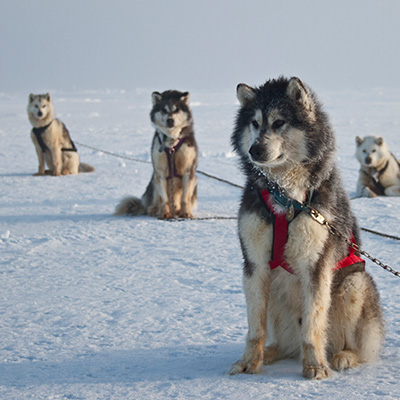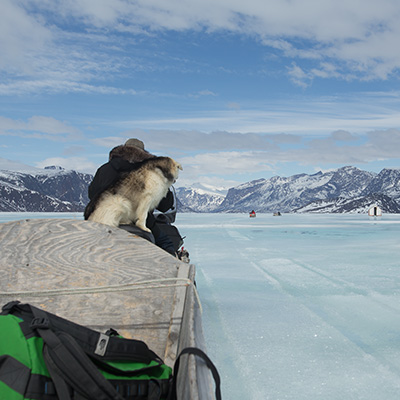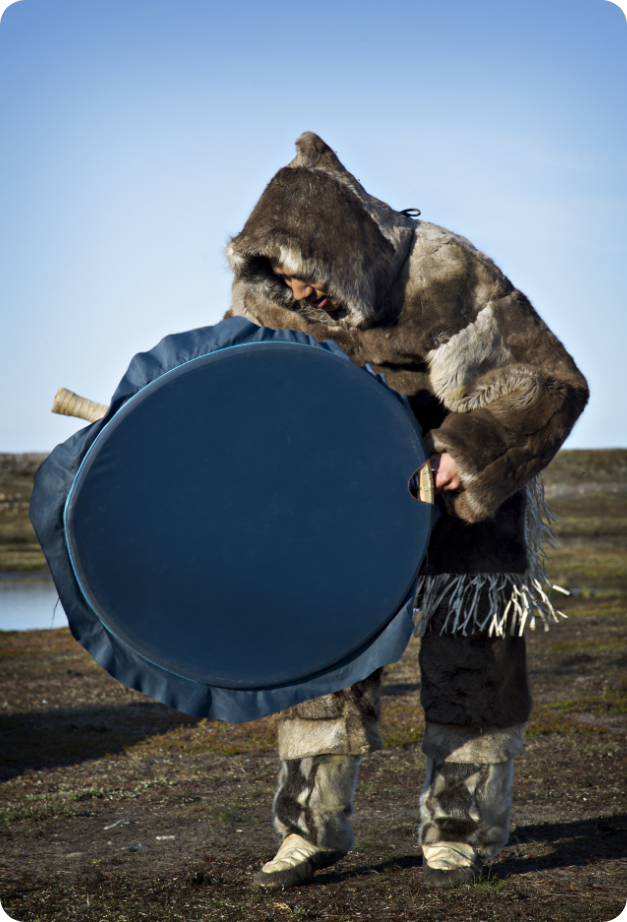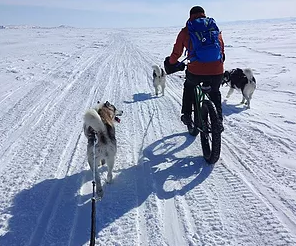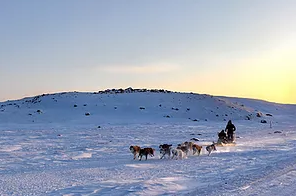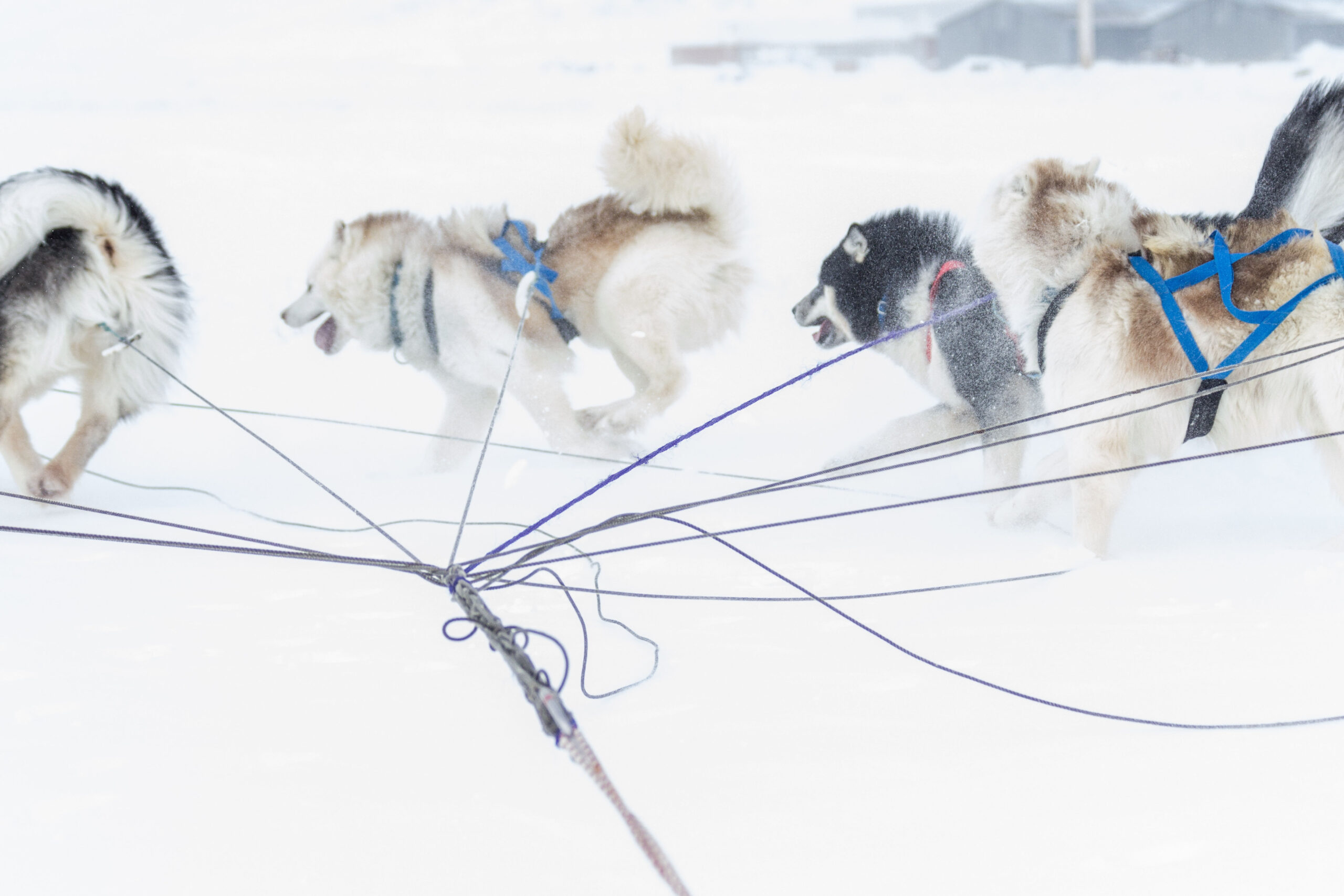Inuit Hold Qimmiit In Very High Regard!
This revered type of dog has been a resident of Nunavut for 4,000 years and was bred by the ancient Thule people, the direct ancestors of the Inuit.
- Paleo-Eskimo Culture: 2500 BC to 1500 BC
- Pre-Dorset Culture (‘Saqqaq’): 2500 BC to 500 BC
- Dorset Culture (‘Tuniit’ or ‘Sivullirmiut’): 500 BC to 1500 AD
- Thule Culture (Proto-Inuit): 1000 AD to 1600 AD
- Inuit Culture (Eskimo): 1600 AD to present-day
For many centuries ‘qimmiit’ were used as the preferred method of transportation in the north. These dogs pulled ‘qamutiit’ (sleds) and provided companionship. They helped to hunt seals and caribou, sniffing out seal breathing holes in the winter and caribou tracks in the summer. They also provided protection, loudly warning people about nearby polar bears, then chasing them and fighting them so that the dangerous marauding predators could be killed. With their thick warm coats, these brave dogs are not bothered by severe cold or snowstorms.
Dogsledding Tours And Races
While snowmobiles have replaced dogsledding teams in most parts of Nunavut today, the importance of these dogs remains proudly visible. They are still used for hunting transportation, tourism and annual dogsled races that take place in many communities, including Arctic Bay, Igloolik and Iqaluit.
Many communities in Nunavut offer exhilarating full-day dogsledding runs to visitors. There are also extended excursions for seasoned arctic adventurers. Contact Travel Nunavut for more information about local operators, tours and rates.
In the springtime, as the sea ice begins to break up, travelling by dogsled is a wonderful, traditional Inuit way to be transported to the floe edge for viewing marine mammal and avian wildlife species.
They are powerful working animals, accustomed to the arctic wilderness and they can be aggressive. If you follow this advice, however, you will find dogsledding to be a lot of fun! Guaranteed.
